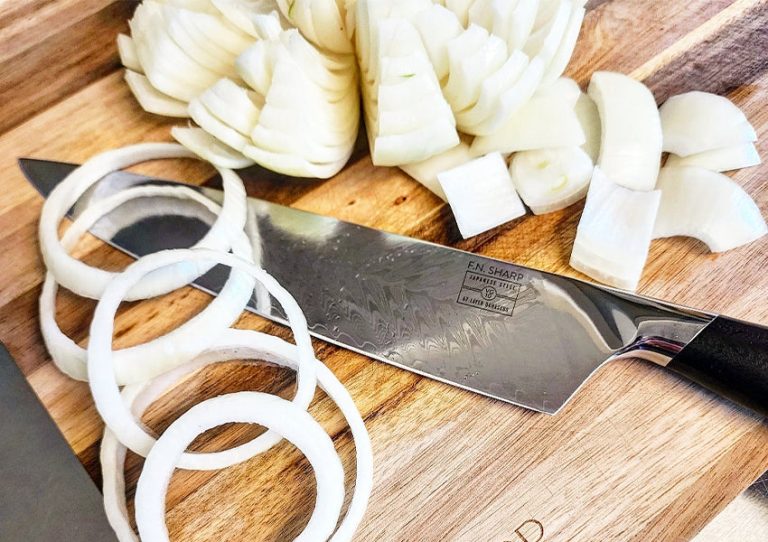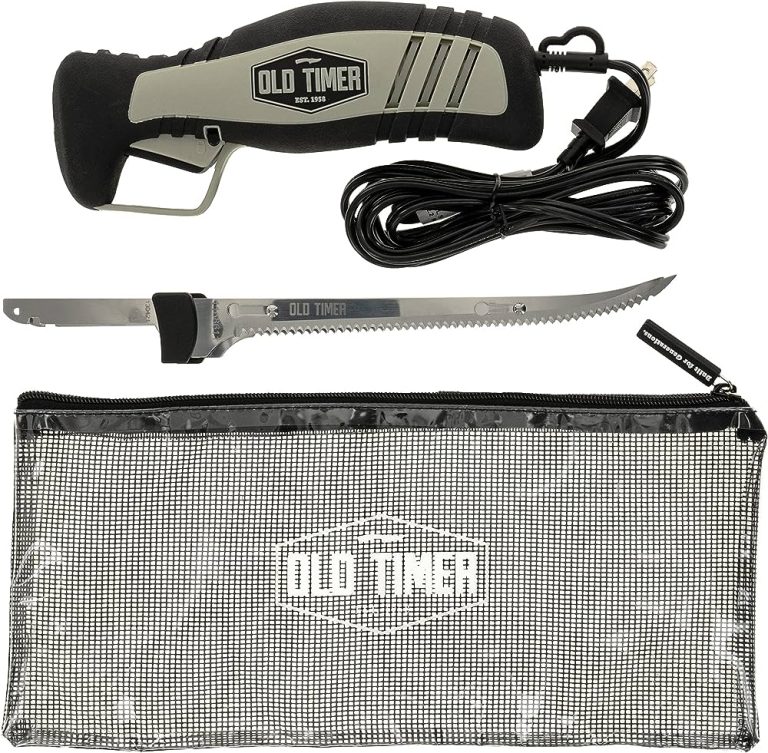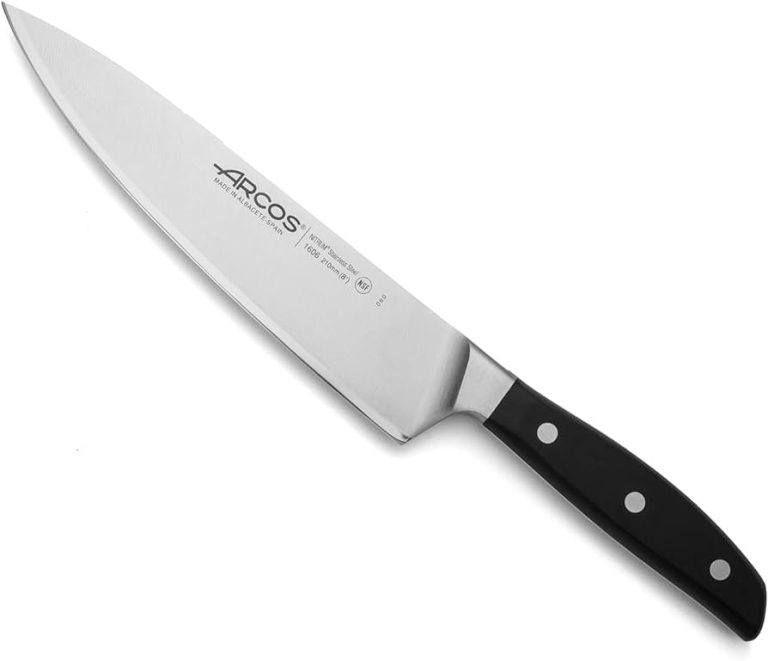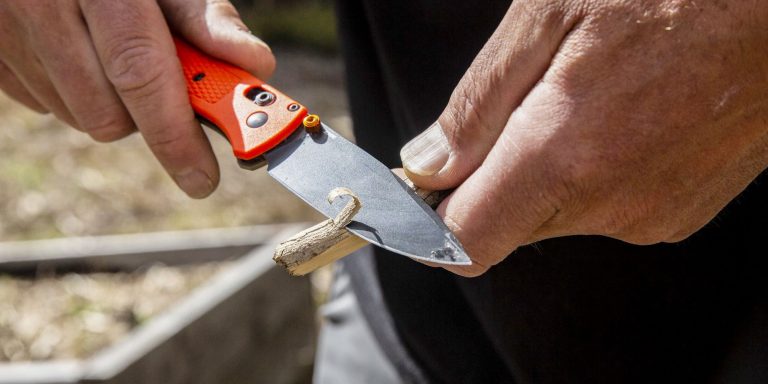How to Sharpen Ceramic Knives
To sharpen ceramic knives, use a diamond-coated sharpening stone or a ceramic sharpening rod. Ceramic knives require special sharpening tools because they are more delicate than other types of knives.
Regular sharpening will help maintain the sharpness and longevity of your ceramic knives. Keep reading to learn the step-by-step process and tips for sharpening ceramic knives effectively. Ceramic knives have become popular choices among chefs and home cooks due to their durability and sharpness.
However, like any other knife, ceramic knives can also become dull over time and require sharpening. Sharpening ceramic knives requires special tools and techniques to avoid damaging the delicate blade. We will guide you on how to sharpen ceramic knives effectively using the right tools. We will provide step-by-step instructions, along with some useful tips and tricks to help maintain the sharpness and lifespan of your ceramic knives.

Credit: www.youtube.com
Understanding Ceramic Knives
Ceramic knives possess unique properties that set them apart from traditional metal knives. The main advantage of ceramic knives is their exceptional hardness, which allows them to retain sharpness for a longer time compared to steel knives. This means less frequent sharpening, ensuring precision cutting and reducing the risk of accidents. Additionally, ceramic knives are non-reactive, meaning they do not alter the taste or appearance of certain foods. They are also lightweight and easy to handle, providing a comfortable cutting experience.
The unique properties of ceramic knives
The exceptional hardness of ceramic knives is a result of the material they are made from, typically zirconium oxide. This exceptional hardness enables them to resist wear, extending their lifespan and reducing the need for frequent sharpening. Ceramic blades are also resistant to rust and corrosion, making them ideal for use in wet environments such as kitchens. However, it is crucial to note that the extreme hardness of ceramic knives makes them more prone to chipping or breaking if not handled with care. Proper storage and avoiding cutting on hard surfaces are essential to maintain their longevity.
Advantages and disadvantages of ceramic knives
| Advantages | Disadvantages |
|---|---|
| – Exceptional hardness | – Prone to chipping or breaking |
| – Long-lasting sharpness | – Not suitable for heavy-duty tasks |
| – Non-reactive and lightweight | – Special care required during handling |
| – Rust and corrosion resistant | – Limited flexibility |
Signs That Your Ceramic Knife Needs Sharpening
One of the signs that your ceramic knife needs sharpening is the dullness of the blade. When the blade becomes dull, it can have difficulty cutting through various foods. You may notice that it takes more effort to slice through fruits, vegetables, or meats, and the cuts may not be as clean and precise as they used to be.
Noticing these signs is important because a dull ceramic knife can be less effective in the kitchen. It may not provide the quick and effortless cutting experience that you expect from a sharp knife. Therefore, it is recommended to regularly check the sharpness of your ceramic knife and sharpen it as needed to maintain its cutting performance and longevity.
Step-By-Step Guide: How To Sharpen Ceramic Knives
Gathering the necessary tools for sharpening ceramic knives is an essential first step. You’ll need a diamond sharpening rod, a wet stone, or a diamond sharpening stone to effectively sharpen the knife. It’s important to note that ceramic knives require a different sharpening process compared to traditional steel knives.
To prepare the knife for sharpening, start by cleaning the blade with warm soapy water and drying it thoroughly. This will remove any dirt or debris that may affect the sharpening process. Once the blade is clean, protect your hands with a cut-resistant glove and secure the knife in a steady position on a cutting board or a non-slip surface.
With the necessary tools and the knife properly prepared, you’re ready to proceed with the step-by-step guide to sharpening ceramic knives.
Sharpening Methods For Ceramic Knives
Sharpening Methods for Ceramic Knives
Method 1: Using a Diamond Sharpening Rod
Proper technique for honing the blade: Hold the knife at a 20-degree angle and gently slide the diamond rod along the cutting edge. Use light pressure and repeat until the blade feels sharp.
Ensuring even sharpening across the entire length of the blade: Maintain consistent pressure and stroke the rod from the blade’s heel to its tip in a smooth motion.
Method 2: Using a Whetstone
Selecting the right grit size for ceramic knives: Start with a 400 to 600 grit whetstone and gradually move to finer grits for a polished edge.
How to maintain the correct sharpening angle: Hold the knife at a 20-degree angle and glide the blade across the whetstone, ensuring contact with the entire cutting edge.
Method 3: Using Electric Knife Sharpeners
Finding the appropriate sharpening setting for ceramic knives: Look for specific instructions or settings for ceramic knives on the electric sharpener and follow them carefully.
Safety precautions when using electric sharpeners: Always wear protective gear, ensure the knife is well-secured, and follow the manufacturer’s instructions to avoid accidents.
Additional Tips For Sharpening Ceramic Knives
Additional Tips for Sharpening Ceramic Knives
Proper maintenance and care of ceramic knives is crucial for prolonging their sharpness. Here are some helpful guidelines:
- Frequency of sharpening: Unlike traditional steel knives, ceramic knives require less frequent sharpening. However, it’s important to monitor their sharpness and sharpen as needed. Periodic touch-ups will help maintain the knife’s effectiveness.
- Use a diamond sharpening rod: Ceramic knives are best sharpened using a diamond sharpening rod. This specialized tool ensures precision and minimizes the risk of damage to the delicate blade.
- Angle and pressure: When sharpening ceramic knives, maintain a consistent angle and apply gentle, even pressure. Avoid excessive force, as it can compromise the integrity of the blade.
- Dry sharpening: Always sharpen ceramic knives in a dry environment. Moisture or water can cause the blade to slip, leading to accidents or injuries.
- Honing alternative: If you don’t have access to a diamond sharpening rod, using a ceramic honing rod can help maintain the knife’s edge between sharpening sessions.
- Protective storage: Store ceramic knives in protective sheaths or knife blocks to prevent accidental contact with other utensils, which can cause chipping or dulling of the blade.
By adhering to these tips, you can keep your ceramic knives sharp and ensure their longevity.
Conclusion
Keeping your ceramic knives sharp is essential for their longevity and optimal performance in the kitchen. By following the simple steps outlined in this blog post, you can ensure that your ceramic knives remain sharp and effective for years to come.
Remember to regularly hone your knives using a ceramic honing rod to maintain their sharpness, and if needed, invest in a high-quality diamond-coated sharpening stone for more intensive sharpening. Be sure to exercise caution when handling ceramic knives, as they are more brittle than traditional steel knives.
With a little care and attention to detail, you can easily sharpen your ceramic knives at home and enjoy the satisfaction of effortlessly slicing through your ingredients with precision and ease. Keep your knives sharp and enjoy the joys of cooking with the perfect tools at your disposal.






